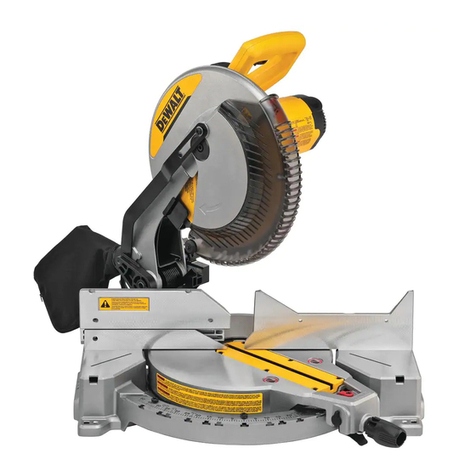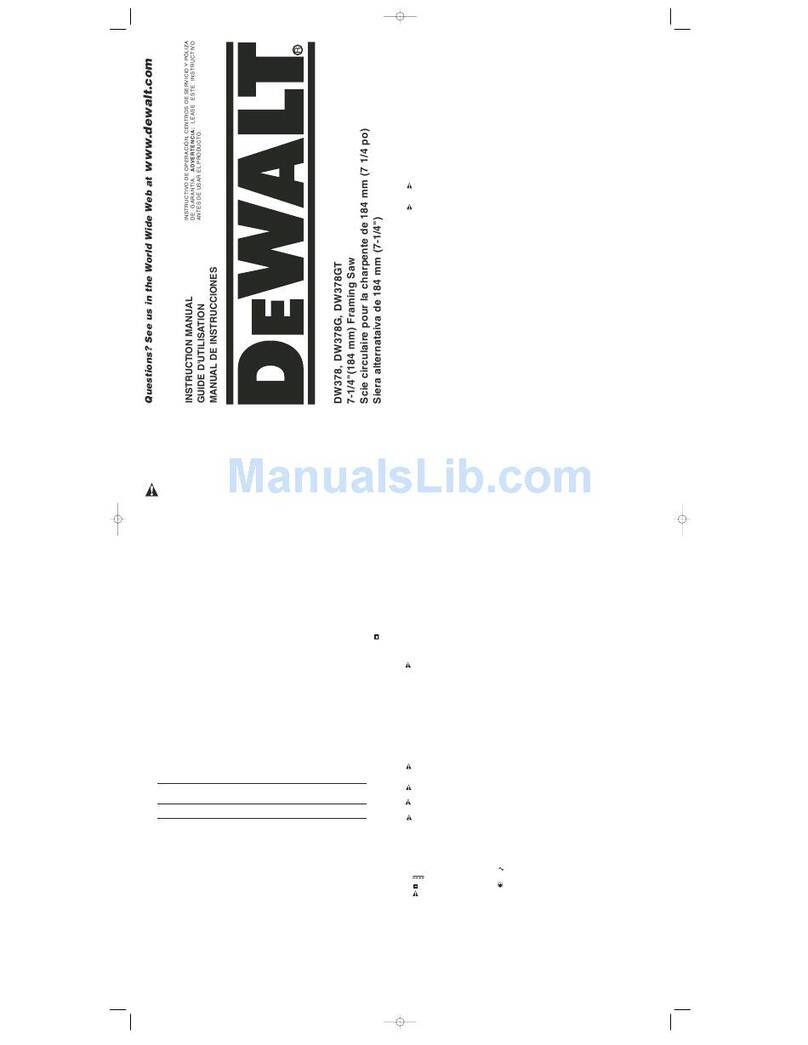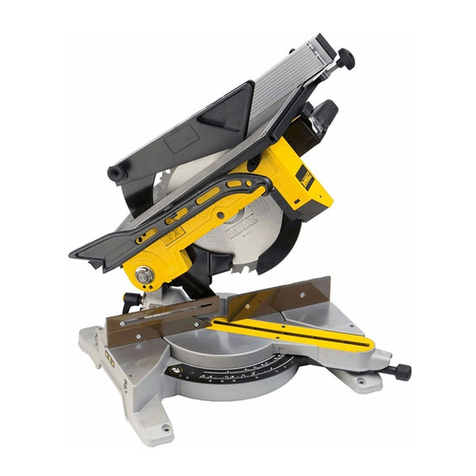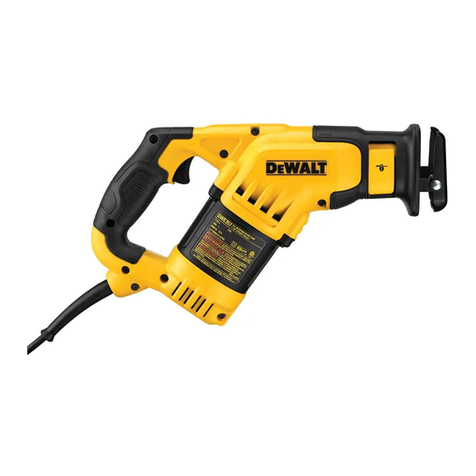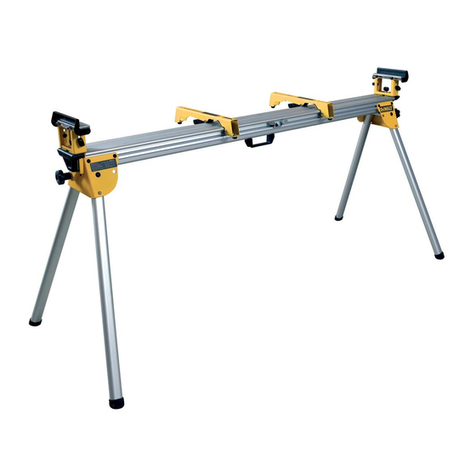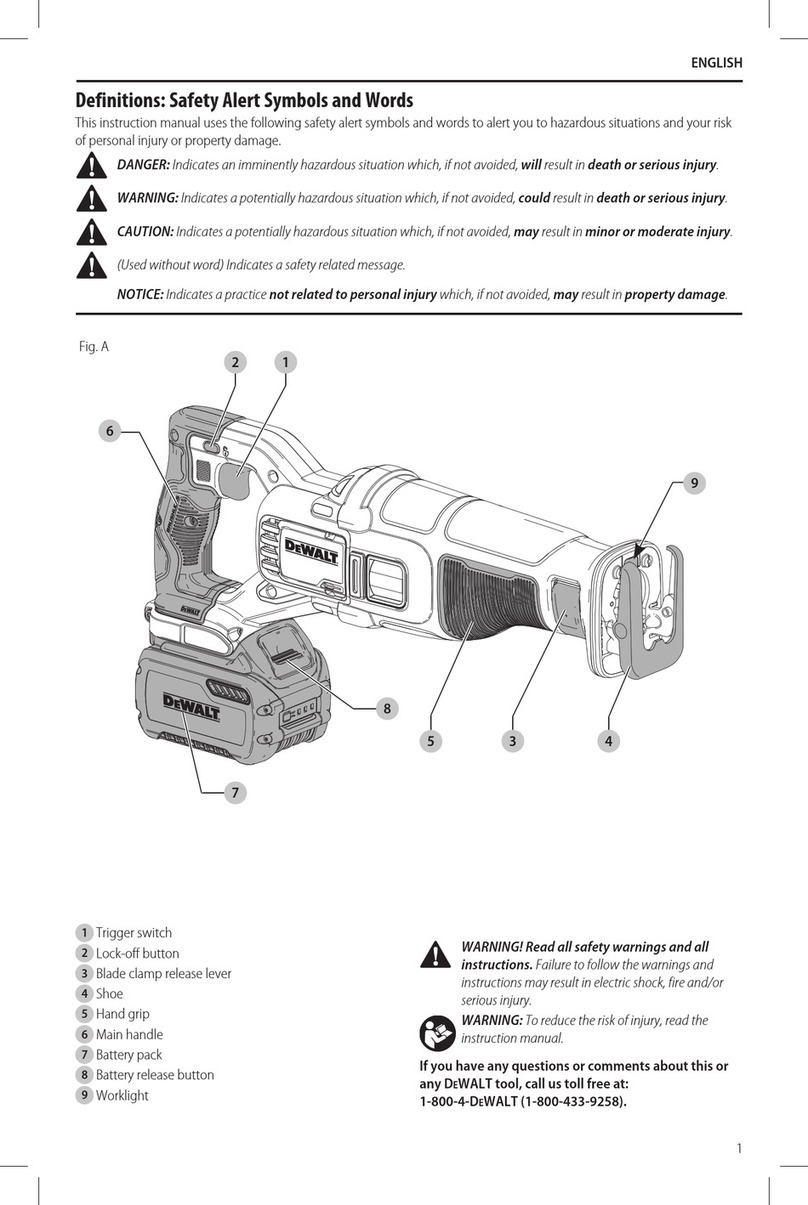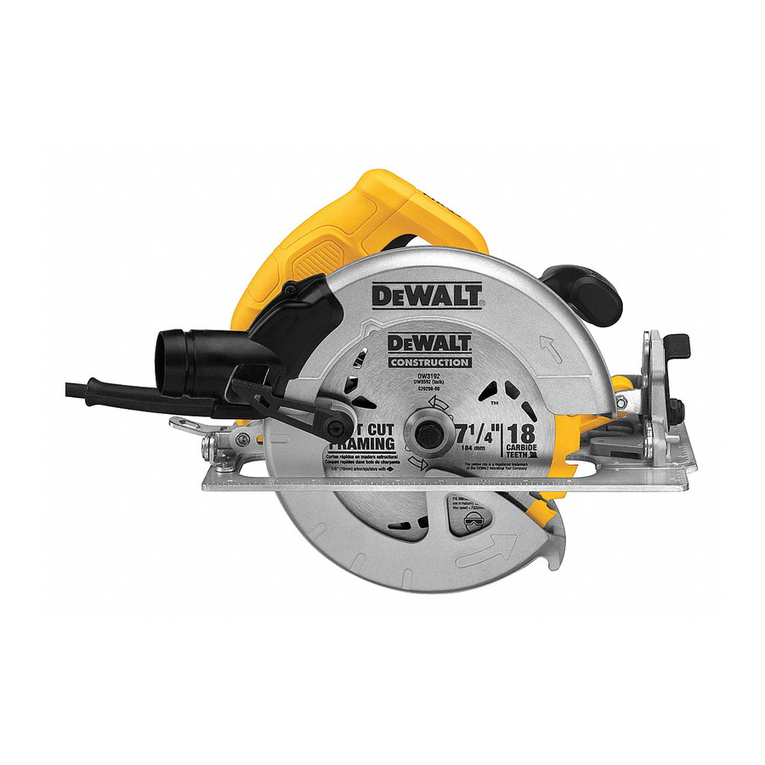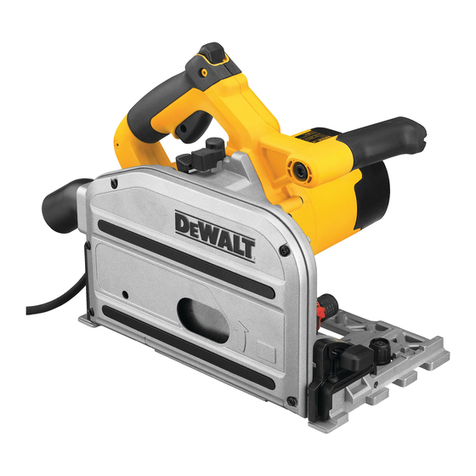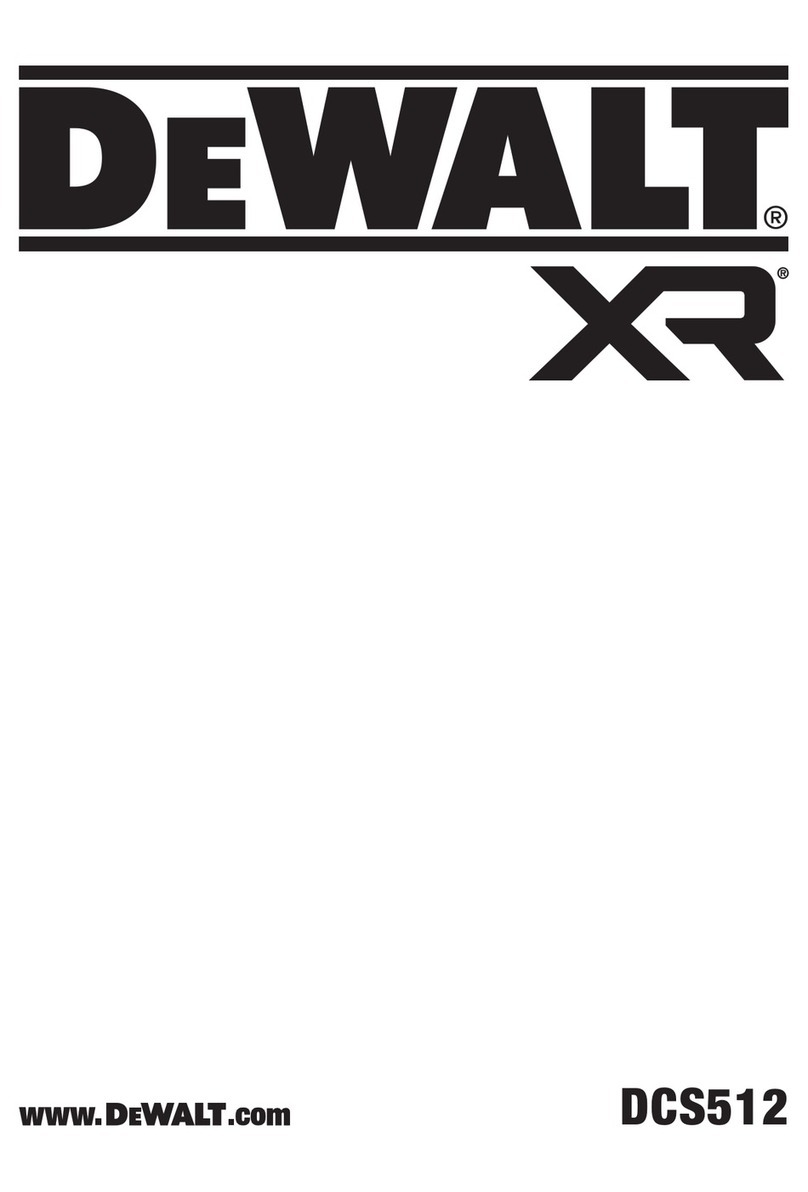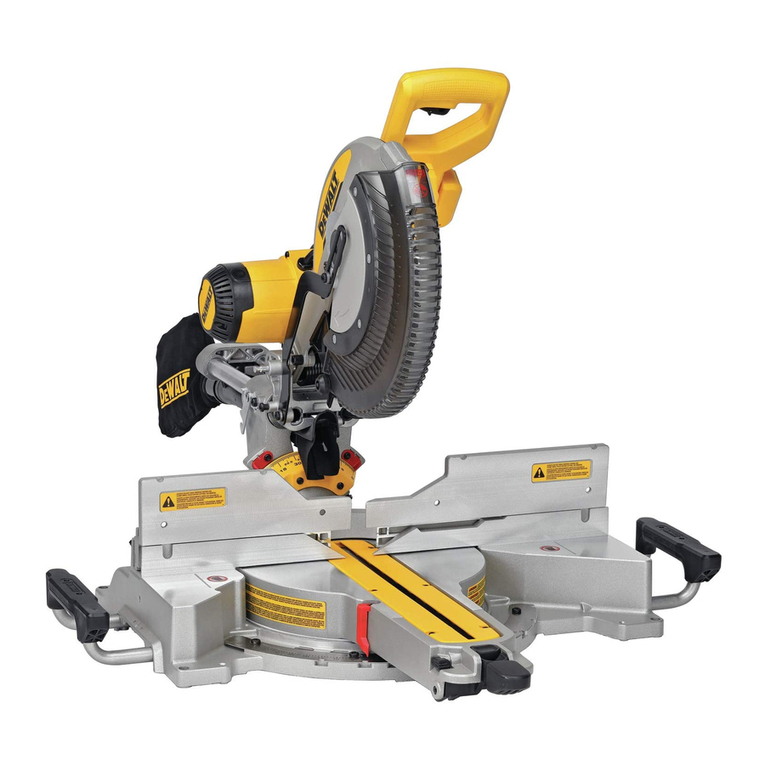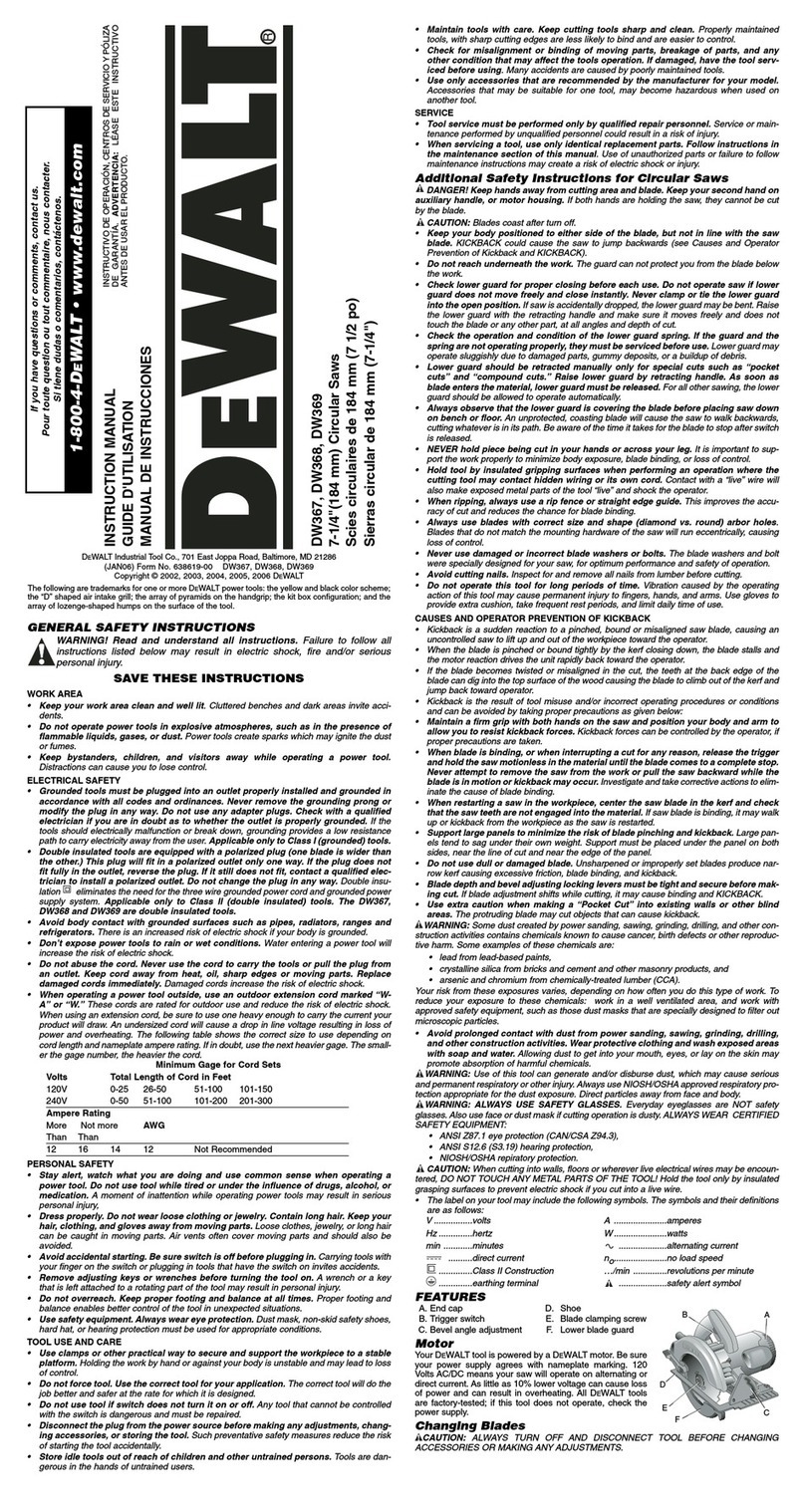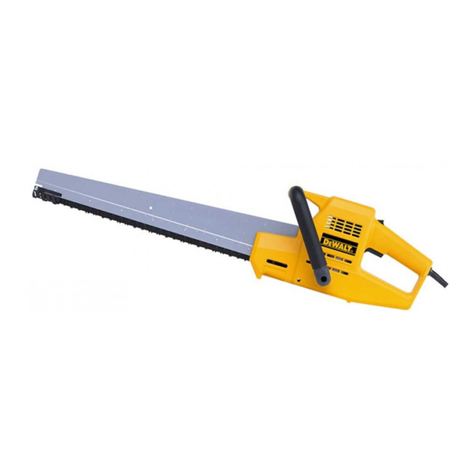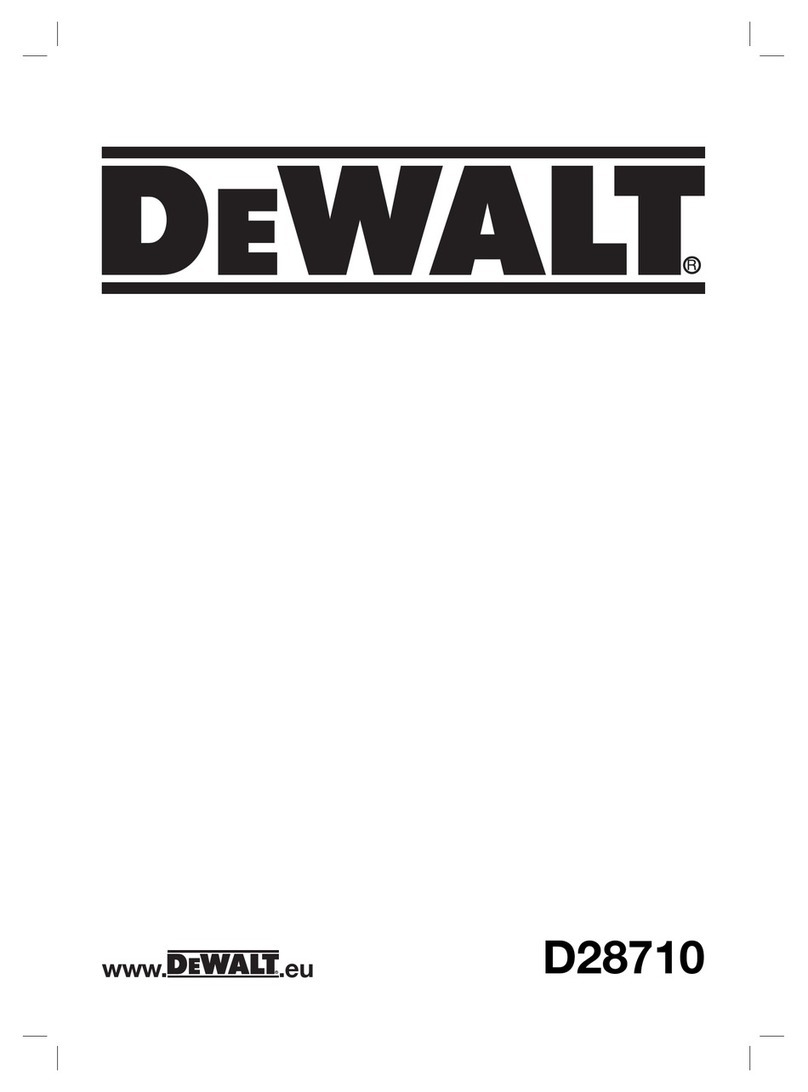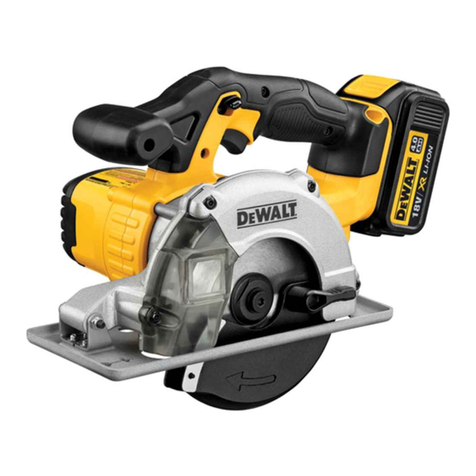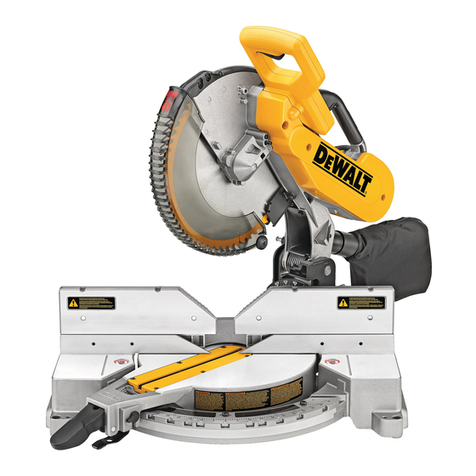
8
ENGLISH
Batteries Chargers/Charge Times (Minutes)**
Cat # VDC Ah Weight (kg) DCB104 DCB107 DCB112 DCB113 DCB115 DCB116 DCB117 DCB118 DCB132
DCB546 18/54 6.0/2.0 1.08 60 270 170 140 90 80 40 60 90
DCB547 18/54 9.0/3.0 1.46 75* 420 270 220 135* 110* 60 75* 135*
DCB548 18/54 12.0/4.0 1.46 120 540 350 300 180 150 80 120 180
DCB549 18/54 15.0/5.0 2.12 125 730 450 380 230 170 90 125 230
*Date code 201811475B or later
Batteries
Chargers/Charge Times (Minutes)
Cat #
DC
Weight
*Date code 201811475B or later
**Date code 201536or later
**Battery charge times matrix provided for guidance only; charge times will vary depending on temperature and condition ofbatteries.
***Battery charge times matrix provided for guidance only; charge times will vary depending on temperature and condition ofbatteries.
GENERAL POWER TOOL SAFETY WARNINGS
WARNING: Read all safety warnings, instructions, illustrations and specifications
provided with this power tool. Failure to follow all instructions listed below may result
in electric shock, fire and/or seriousinjury.
SAVE ALL WARNINGS AND INSTRUCTIONS FOR FUTUREREFERENCE.
The term “power tool” in the warnings refers to your mains‑operated (corded) power tool or
battery‑operated (cordless) powertool.
1) Work Area Safety
a ) Keep work area clean and well lit. Cluttered or dark areas inviteaccidents.
b ) Do not operate power tools in explosive atmospheres, such as in the presence of
flammable liquids, gases or dust. Power tools create sparks which may ignite the dust
orfumes.
c ) Keep children and bystanders away while operating a power tool. Distractions can
cause you to losecontrol.
2) Electrical Safety
a ) Power tool plugs must match the outlet. Never modify the plug in any way. Do
not use any adapter plugs with earthed (grounded) power tools. Unmodified plugs
and matching outlets will reduce risk of electricshock.
b ) Avoid body contact with earthed or grounded surfaces, such as pipes, radiators,
ranges and refrigerators. There is an increased risk of electric shock if your body is
earthed orgrounded.
c ) Do not expose power tools to rain or wet conditions. Water entering a power tool
will increase the risk of electricshock.
d ) Do not abuse the cord. Never use the cord for carrying, pulling or unplugging
the power tool. Keep cord away from heat, oil, sharp edges or moving parts.
Damaged or entangled cords increase the risk of electricshock.
e ) When operating a power tool outdoors, use an extension cord suitable for
outdoor use. Use of a cord suitable for outdoor use reduces the risk of electricshock.
f ) If operating a power tool in a damp location is unavoidable, use a ground
fault circuit interrupter (GFCI) protected supply. Use of a GFCI reduces the risk of
electricshock.
3) Personal Safety
a ) Stay alert, watch what you are doing and use common sense when operating a
power tool. Do not use a power tool while you are tired or under the influence of
drugs, alcohol or medication. A moment of inattention while operating power tools
may result in serious personalinjury.
b ) Use personal protective equipment. Always wear eye protection. Protective
equipment such as a dust mask, non‑skid safety shoes, hard hat, or hearing protection
used for appropriate conditions will reduce personalinjuries.
c ) Prevent unintentional starting. Ensure the switch is in the off‑position before
connecting to power source and/or battery pack, picking up or carrying the tool.
Carrying power tools with your finger on the switch or energizing power tools that have
the switch on invitesaccidents.
d ) Remove any adjusting key or wrench before turning the power tool on. A wrench
or a key left attached to a rotating part of the power tool may result in personalinjury.
e ) Do not overreach. Keep proper footing and balance at all times. This enables better
control of the power tool in unexpectedsituations.
f ) Dress properly. Do not wear loose clothing or jewelry. Keep your hair, clothing
and gloves away from moving parts. Loose clothes, jewelry or long hair can be caught
in movingparts.
g ) If devices are provided for the connection of dust extraction and collection
facilities, ensure these are connected and properly used. Use of dust collection can
reduce dust‑relatedhazards.
h ) Do not let familiarity gained from frequent use of tools allow you to become
complacent and ignore tool safety principles. A careless action can cause severe
injury within a fraction of asecond.
4) Power Tool Use and Care
a ) Do not force the power tool. Use the correct power tool for your application. The
correct power tool will do the job better and safer at the rate for which it wasdesigned.
b ) Do not use the power tool if the switch does not turn it on and off. Any power tool
that cannot be controlled with the switch is dangerous and must berepaired.
c ) Disconnect the plug from the power source and/or remove the battery pack,
if detachable, from the power tool before making any adjustments, changing
accessories, or storing power tools. Such preventive safety measures reduce the risk of
starting the power toolaccidentally.
d ) Store idle power tools out of the reach of children and do not allow persons
unfamiliar with the power tool or these instructions to operate the power tool.
Power tools are dangerous in the hands of untrainedusers.
e ) Maintain power tools and accessories. Check for misalignment or binding of
moving parts, breakage of parts and any other condition that may affect the
power tool’s operation. If damaged, have the power tool repaired before use.
Many accidents are caused by poorly maintained powertools.
f ) Keep cutting tools sharp and clean. Properly maintained cutting tools with sharp
cutting edges are less likely to bind and are easier tocontrol.
g ) Use the power tool, accessories and tool bits etc. in accordance with these
instructions, taking into account the working conditions and the work to be
performed. Use of the power tool for operations different from those intended could
result in a hazardoussituation.
h ) Keep handles and grasping surfaces dry, clean and free from oil and grease.
Slippery handles and grasping surfaces do not allow for safe handling and control of the
tool in unexpectedsituations.
5) Battery Tool Use and Care
a ) Recharge only with the charger specified by the manufacturer. A charger that is
suitable for one type of battery pack may create a risk of fire when used with another
batterypack.
b ) Use power tools only with specifically designated battery packs. Use of any other
battery packs may create a risk of injury andfire.
c ) When battery pack is not in use, keep it away from other metal objects, like
paper clips, coins, keys, nails, screws or other small metal objects, that can make
a connection from one terminal to another. Shorting the battery terminals together
may cause burns or afire.
d ) Under abusive conditions, liquid may be ejected from the battery; avoid
contact. If contact accidentally occurs, flush with water. If liquid contacts eyes,
additionally seek medical help. Liquid ejected from the battery may cause irritation
orburns.
e ) Do not use a battery pack or tool that is damaged or modified. Damaged or
modified batteries may exhibit unpredictable behavior resulting in fire, explosion or risk
ofinjury.
f ) Do not expose a battery pack or tool to fire or excessive temperature. Exposure to
fire or temperature above 130°C may causeexplosion.
g ) Follow all charging instructions and do not charge the battery pack or tool
outside the temperature range specified in the instructions. Charging improperly
or at temperatures outside the specified range may damage the battery and increase the
risk offire.
6) Service
a ) Have your power tool serviced by a qualified repair person using only identical
replacement parts. This will ensure that the safety of the power tool ismaintained.
b ) Never service damaged battery packs. Service of battery packs should only be
performed by the manufacturer or authorized serviceproviders.
Safety Instructions for Mitre Saws
a ) Mitre saws are intended to cut wood or wood‑like products, they cannot be used
with abrasive cut‑off wheels for cutting ferrous material such as bars, rods,
studs, etc. Abrasive dust causes moving parts such as the lower guard to jam. Sparks
from abrasive cutting will burn the lower guard, the kerf insert and other plasticparts.
b ) Use clamps to support the workpiece whenever possible. If supporting the
workpiece by hand, you must always keep your hand at least 100mm from either
side of the saw blade. Do not use this saw to cut pieces that are too small to be
securely clamped or held by hand. If your hand is placed too close to the saw blade,
there is an increased risk of injury from bladecontact.
c ) The workpiece must be stationary and clamped or held against both the fence
and the table. Do not feed the workpiece into the blade or cut “freehand” in any
way. Unrestrained or moving workpieces could be thrown at high speeds, causinginjury.
d ) Push the saw through the workpiece. Do not pull the saw through the workpiece. To make
a cut, raise the saw head and pull it out over the workpiece without cutting, start the
motor, press the saw head down and push the saw through the workpiece. Cutting on the
pull stroke is likely to cause the saw blade to climb on top of the workpiece and violently
throw the blade assembly towards theoperator.
e ) Never cross your hand over the intended line of cutting either in front or behind
the saw blade. Supporting the workpiece “cross handed” i.e. holding the workpiece to
the right of the saw blade with your left hand or vice versa is verydangerous.
f ) Do not reach behind the fence with either hand closer than 100mm from either
side of the saw blade, to remove wood scraps, or for any other reason while the
blade is spinning. The proximity of the spinning saw blade to your hand may not be
obvious and you may be seriouslyinjured.
g ) Inspect your workpiece before cutting. If the workpiece is bowed or warped,
clamp it with the outside bowed face toward the fence. Always make certain that
there is no gap between the workpiece, fence and table along the line of the cut.
